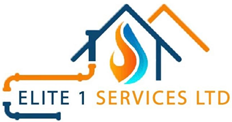Regular plumbing maintenance is essential for preventing costly repairs, improving efficiency, and ensuring your home’s water systems work seamlessly. By following this detailed plumbing maintenance checklist, you can catch small issues before they turn into major problems and extend the lifespan of your plumbing system.
Monthly Plumbing Maintenance Tasks
Performing monthly checks is a quick and effective way to stay on top of your plumbing system’s health.
1. Inspect for Leaks
- Look under sinks, around toilets, and near appliances like dishwashers and washing machines for signs of leaks or water stains.
- Check visible pipes for rust, corrosion, or condensation, which may indicate potential issues.
- Address small leaks promptly to prevent water damage and high water bills.
2. Test Water Pressure
- Turn on all taps and showerheads to ensure the water pressure is consistent and strong.
- If pressure seems low, clean any debris from faucet aerators or showerheads.
- Persistent low pressure could indicate a hidden leak or a larger plumbing issue, which may require professional attention.
3. Clean Drains
- Clear slow-draining sinks and showers with a natural solution like baking soda and vinegar followed by hot water.
- Avoid using chemical drain cleaners, which can damage pipes over time.
Seasonal Plumbing Maintenance Tasks
Adapting your maintenance routine to the changing seasons helps protect your plumbing system from weather-related issues.
Spring
- Inspect Outdoor Hoses and Taps: Check outdoor faucets and garden hoses for frost damage that may have occurred over winter. Replace any cracked or damaged components.
- Gutters and Downspouts: Ensure gutters and downspouts are clear of debris to allow proper drainage during spring rains.
Summer
- Inspect Irrigation Systems: Ensure your sprinkler systems and garden hoses are functioning correctly to avoid water wastage.
- Check for Slow Drains: The increased use of outdoor and indoor water systems during summer can lead to clogs. Address them early.
Autumn
- Clean Gutters and Downspouts Again: Falling leaves can block drainage, potentially leading to water buildup and damage.
- Disconnect Hoses: Disconnect garden hoses from outdoor taps to prevent freezing water from cracking pipes.
Winter
- Insulate Exposed Pipes: Use foam insulation or heat tape to protect pipes in unheated areas like basements, garages, and crawl spaces.
- Drip Faucets: Allow faucets to drip slightly during freezing weather to prevent pressure buildup in pipes, which can cause them to burst.
- Check Your Boiler: Ensure your boiler or central heating system is functioning efficiently to prevent breakdowns in the cold months.
Annual Plumbing Maintenance Tasks
Taking the time to perform annual tasks can significantly reduce the risk of costly plumbing emergencies.
1. Schedule Professional Drain Cleaning
- Have a professional plumber clean your drains to remove stubborn buildup that can lead to clogs or slow drainage.
- This is particularly important if you notice recurring issues despite regular maintenance.
2. Flush Your Water Heater
- Sediment buildup at the bottom of your water heater can reduce efficiency and lifespan. Flushing the tank annually helps maintain optimal performance.
- Check the anode rod inside the water heater and replace it if necessary to prevent corrosion.
3. Inspect Sump Pumps
- If your home has a sump pump, test it annually to ensure it’s working properly. Pour water into the pit to trigger the pump and confirm it drains effectively.
- Consider having a backup power source to keep the pump running during power outages.
4. Inspect and Service Plumbing Fixtures
- Check for wear and tear on faucets, showerheads, and toilet components.
- Replace worn washers or seals to prevent leaks.
Extra Tips for Plumbing Maintenance
- Monitor Water Bills: Sudden increases in your water bill could indicate a hidden leak.
- Know Your Shut-Off Valves: Familiarize yourself with the location of your main water shut-off valve and individual shut-off valves for sinks, toilets, and appliances. This can save you time during emergencies.
- Install Water Alarms: Water alarms placed near vulnerable areas like water heaters, sump pumps, and washing machines can alert you to leaks before they cause significant damage.
When to Call a Professional
While regular maintenance can prevent many issues, some problems require expert attention:
- Persistent low water pressure.
- Unusual noises from your pipes, like banging or gurgling.
- Repeated clogs or slow drains.
- Visible signs of pipe damage or significant leaks.
Conclusion
A well-maintained plumbing system not only ensures peace of mind but also saves money in the long run. By following this plumbing maintenance checklist, you can keep your home’s water systems in excellent condition and avoid unexpected emergencies. For more complex issues or routine inspections, don’t hesitate to reach out to a professional plumber.
Consistent care and timely intervention are the keys to a trouble-free plumbing system. Stay proactive, and you’ll enjoy a smoothly functioning home year-round!
